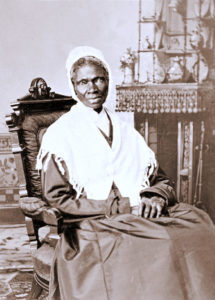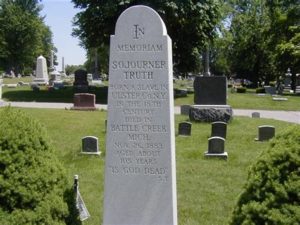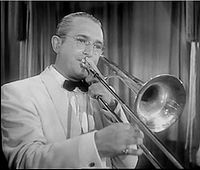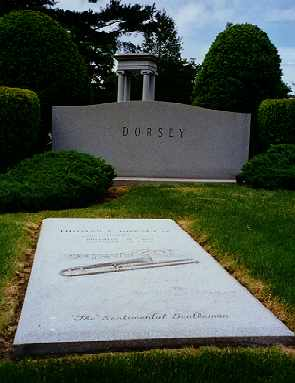 On this day in 1504, Isabella the Catholic, queen of Castile and León (Crown of Castile), Isabella I died in Medina del Campo at the age of 53. Born in Madrigal de las Altas Torres, Ávila, to John II of Castile and Isabella of Portugal on 22 April 1451. She and her husband, Ferdinand II of Aragon, brought stability to the kingdoms that became the basis for the political unification of Spain under their grandson, Holy Roman Emperor Charles V. After a struggle to claim her right to the throne, she reorganised the governmental system, brought the crime rate to the lowest it had been in years, and unburdened the kingdom of enormous debt. Isabella’s reforms and those she made with her husband had an influence that extended well beyond the borders of their united kingdoms. Isabella and Ferdinand are known for completing the Reconquista, ordering conversion or exile of their Muslim and Jewish subjects in the Spanish Inquisition, and for supporting and financing Christopher Columbus’s 1492 voyage that led to the opening of the New World. Isabella was granted the title Servant of God by the Catholic Church in 1974.
On this day in 1504, Isabella the Catholic, queen of Castile and León (Crown of Castile), Isabella I died in Medina del Campo at the age of 53. Born in Madrigal de las Altas Torres, Ávila, to John II of Castile and Isabella of Portugal on 22 April 1451. She and her husband, Ferdinand II of Aragon, brought stability to the kingdoms that became the basis for the political unification of Spain under their grandson, Holy Roman Emperor Charles V. After a struggle to claim her right to the throne, she reorganised the governmental system, brought the crime rate to the lowest it had been in years, and unburdened the kingdom of enormous debt. Isabella’s reforms and those she made with her husband had an influence that extended well beyond the borders of their united kingdoms. Isabella and Ferdinand are known for completing the Reconquista, ordering conversion or exile of their Muslim and Jewish subjects in the Spanish Inquisition, and for supporting and financing Christopher Columbus’s 1492 voyage that led to the opening of the New World. Isabella was granted the title Servant of God by the Catholic Church in 1974.
 The Final Footprint – Isabella is entombed in Granada in the Capilla Real, which was built by her grandson, Charles V, Holy Roman Emperor (Carlos I of Spain), alongside her husband Ferdinand, her daughter Joanna and Joanna’s husband Philip; and Isabella’s 2-year-old grandson, Miguel (the son of Isabella’s daughter, also named Isabella, and King Manuel I of Portugal). The museum next to the Capilla Real holds her crown and scepter.
The Final Footprint – Isabella is entombed in Granada in the Capilla Real, which was built by her grandson, Charles V, Holy Roman Emperor (Carlos I of Spain), alongside her husband Ferdinand, her daughter Joanna and Joanna’s husband Philip; and Isabella’s 2-year-old grandson, Miguel (the son of Isabella’s daughter, also named Isabella, and King Manuel I of Portugal). The museum next to the Capilla Real holds her crown and scepter.
 On this day in 1883, abolitionist and women’s rights activist Sojourner Truth died at her Battle Creek, Michigan home, at the approximate age of 86. Born Isabella (Belle) Baumfree; c. 1797 into slavery in Swartekill, Ulster County, New York. She and her infant daughter escaped to freedom in 1826. After going to court to recover her son, in 1828 she became the first black woman to win such a case against a white man.
On this day in 1883, abolitionist and women’s rights activist Sojourner Truth died at her Battle Creek, Michigan home, at the approximate age of 86. Born Isabella (Belle) Baumfree; c. 1797 into slavery in Swartekill, Ulster County, New York. She and her infant daughter escaped to freedom in 1826. After going to court to recover her son, in 1828 she became the first black woman to win such a case against a white man.
She gave herself the name Sojourner Truth in 1843 after she became convinced that God had called her to leave the city and go into the countryside “testifying the hope that was in her”. Perhaps her best-known speech was delivered extemporaneously, in 1851, at the Ohio Women’s Rights Convention in Akron, Ohio. The speech became widely known during the Civil War by the title “Ain’t I a Woman?,” a variation of the original speech re-written by someone else using a stereotypical Southern dialect; whereas Sojourner Truth was from New York and grew up speaking Dutch as her first language. During the Civil War, Truth helped recruit black troops for the Union Army. After the war, she tried unsuccessfully to secure land grants from the federal government for former slaves.
 The Final Footprint
The Final Footprint
On November 28 her funeral was held at the Congregational-Presbyterian Church officiated by its pastor, the Reverend Reed Stuart. Some of the prominent citizens of Battle Creek acted as pall-bearers. Truth was buried in the city’s Oak Hill Cemetery.
The calendar of saints of the Episcopal Church remembers Sojourner Truth annually, together with Elizabeth Cady Stanton, Amelia Bloomer and Harriet Ross Tubman on July 20. The calendar of saints of the Lutheran Church remembers Sojourner Truth together with Harriet Tubman on March 10.
A larger-than-life sculpture of Sojourner Truth by artist Tina Allen, was dedicated in 1999, which is the estimated bicentennial of Sojourner’s birth. The 12-foot tall Sojourner monument is cast bronze.
The U.S. Treasury Department announced in 2016 that an image of Sojourner Truth will appear on the back of a newly designed $10 bill along with Lucretia Mott, Susan B. Anthony, Elizabeth Cady Stanton, Alice Paul and the 1913 Woman Suffrage Procession. Designs for new $5, $10 and $20 bills will be unveiled in 2020 in conjunction with the 100th anniversary of American women winning the right to vote via the Nineteenth Amendment to the United States Constitution.
 On this day in 1956, jazz trombonist, trumpeter, composer, bandleader of the Big Band era, younger brother of Jimmy, “The Sentimental Gentleman of Swing”, Tommy Dorsey, died at his Greenwich, Connecticut home at the age of 51. Born Thomas Francis Dorsey, Jr. on 19 November 1905 near Shenandoah, Pennsylvania. Dorsey married three times, Mildred Kraft (divorce), Pat Dane (divorce), Jane Carl New (his death).
On this day in 1956, jazz trombonist, trumpeter, composer, bandleader of the Big Band era, younger brother of Jimmy, “The Sentimental Gentleman of Swing”, Tommy Dorsey, died at his Greenwich, Connecticut home at the age of 51. Born Thomas Francis Dorsey, Jr. on 19 November 1905 near Shenandoah, Pennsylvania. Dorsey married three times, Mildred Kraft (divorce), Pat Dane (divorce), Jane Carl New (his death).
 The Final Footprint – Dorsey is interred in the Dorsey Private Hedge Estate in Kensico Cemetery in Valhalla, New York. The estate is marked by a large upright granite marker. His grave is marked by a full ledger granite marker inscribed with a picture of sheet music and a trombone and his nickname, The Sentimental Gentleman.
The Final Footprint – Dorsey is interred in the Dorsey Private Hedge Estate in Kensico Cemetery in Valhalla, New York. The estate is marked by a large upright granite marker. His grave is marked by a full ledger granite marker inscribed with a picture of sheet music and a trombone and his nickname, The Sentimental Gentleman.
#RIP #OTD in 2018 film director, screenwriter (The Last Emperor, Before the Revolution, The Conformist, Last Tango in Paris, 1900, La Luna, Tragedy of a Ridiculous Man), Bernardo Bertolucci died of lung cancer in Rome aged 77. Cremation
 On this day in 2021 composer and lyricist Stephen Sondheim died of cardiovascular disease at his home in Roxbury, Connecticut, at the age of 91. Born Stephen Joshua Sondheim on March 22, 1930, in New York City
On this day in 2021 composer and lyricist Stephen Sondheim died of cardiovascular disease at his home in Roxbury, Connecticut, at the age of 91. Born Stephen Joshua Sondheim on March 22, 1930, in New York City
One of the most important figures in twentieth-century musical theater, Sondheim is credited for having “reinvented the American musical” with shows that tackle “unexpected themes that range far beyond the [genre’s] traditional subjects” with “music and lyrics of unprecedented complexity and sophistication.” His shows address “darker, more harrowing elements of the human experience,” with songs often tinged with “ambivalence” about various aspects of life. He was known for his frequent collaborations with Hal Prince and James Lapine on the Broadway stage.
Sondheim’s interest in musical theater began at a young age, and he was mentored by Oscar Hammerstein II. He began his career by writing the lyrics for West Side Story (1957) and Gypsy (1959). He transitioned to writing both music and lyrics for the theater, with his best-known works including A Funny Thing Happened on the Way to the Forum (1962), Company (1970), Follies (1971), A Little Night Music (1973), Sweeney Todd: The Demon Barber of Fleet Street (1979), Merrily We Roll Along (1981), Sunday in the Park with George (1984), and Into the Woods (1987).
Sondheim’s numerous accolades include eight Tony Awards (including a Lifetime Achievement Tony in 2008), an Academy Award, eight Grammy Awards, a Laurence Olivier Award, a Pulitzer Prize, a Kennedy Center Honor, and a Presidential Medal of Freedom. He has a theater named after him both on Broadway and in the West End of London. Film adaptations of his works include West Side Story (1961), A Funny Thing Happened on the Way to the Forum (1966), Sweeney Todd: The Demon Barber of Fleet Street (2007), Into the Woods (2014), and West Side Story (2021).
The Final Footprint
Collaborator and friend Jeremy Sams said Sondheim “died in the arms of his husband Jeff”. On December 8, 2021, Broadway theaters dimmed their marquee lights for one minute as a tribute. A trust managing Sondheim’s estate included the Smithsonian Institution, the Library of Congress, and the New York Public Library for the Performing Arts as beneficiaries.
Have you planned yours yet?
Follow TFF on twitter @RIPTFF

